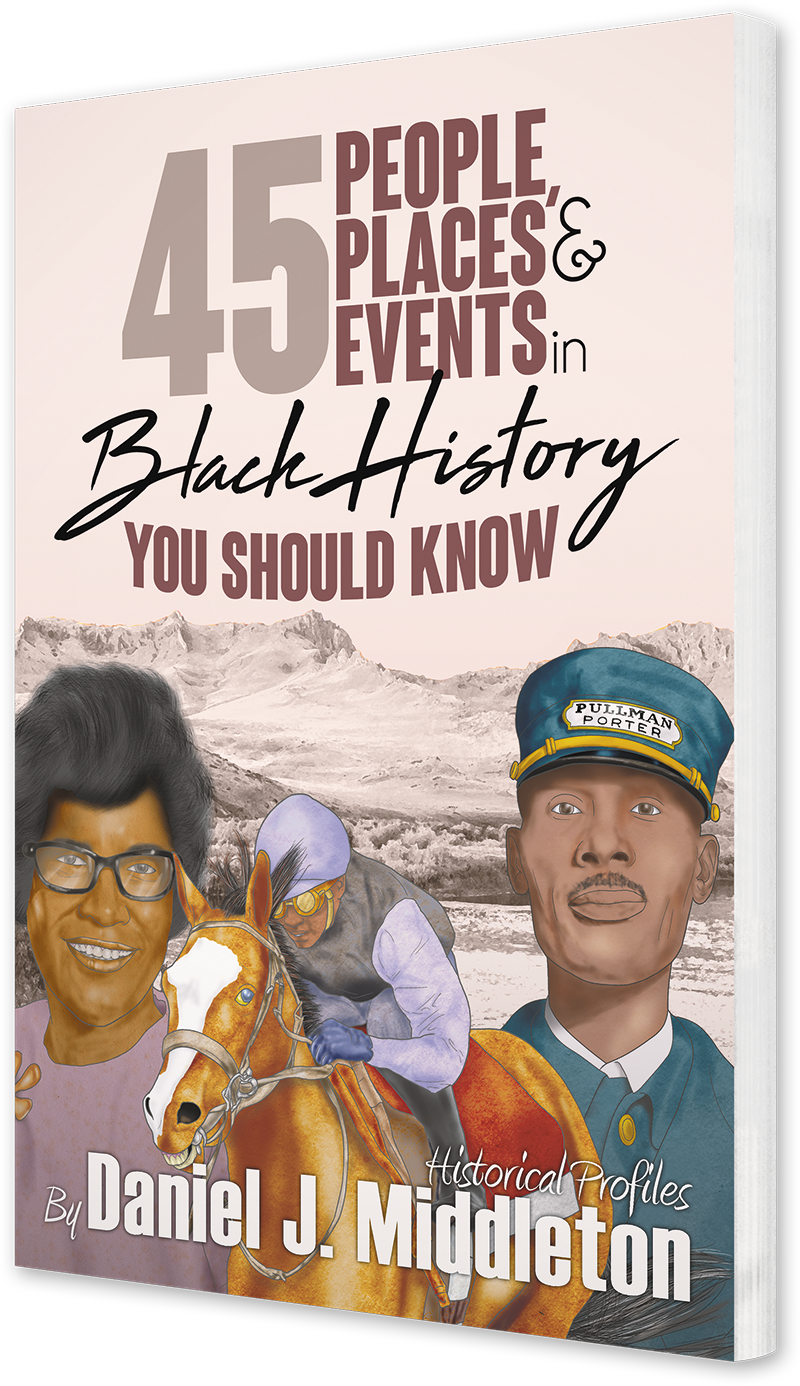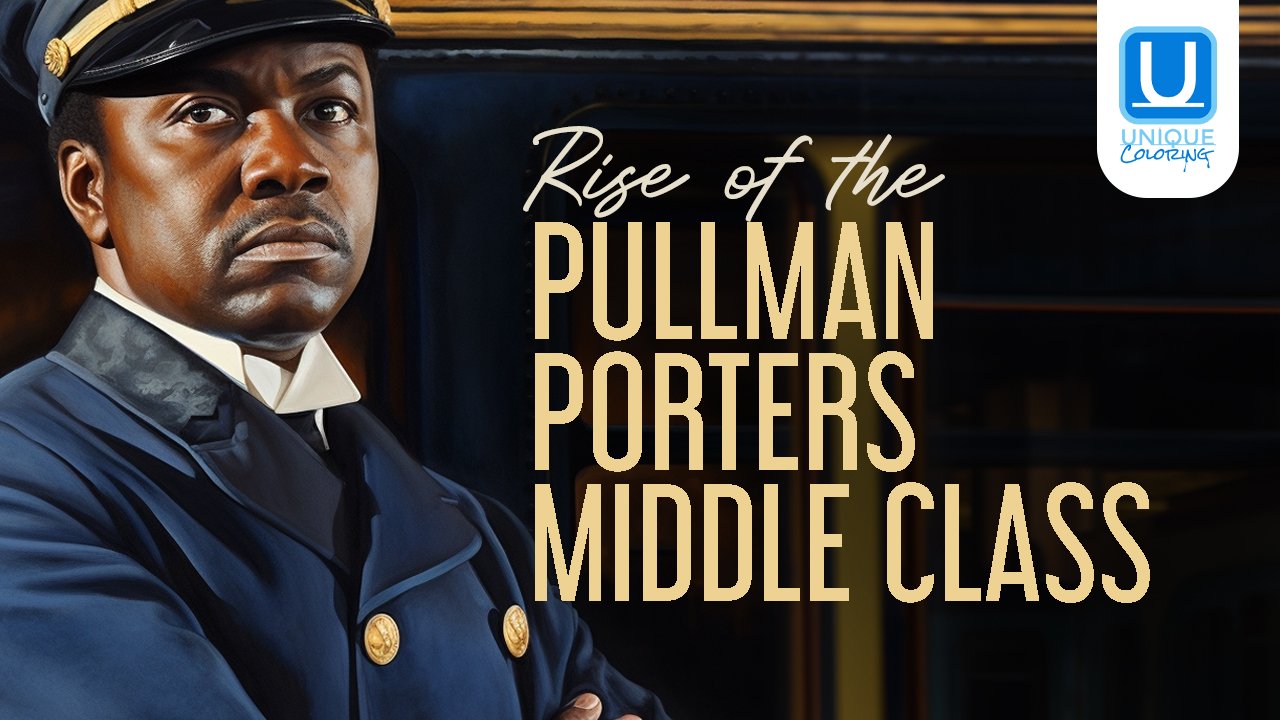Pullman Porters
Pioneers of the Black Middle Class
A crew of Pullman porters posing with what may be a white conductor at center. Photo courtesy of the A. Philip Randolph Pullman Porter Museum.
Before commercial air travel or the highway system that allowed passenger cars to carry people across the country, Americans traveled long distances by passenger train. After the Civil War, George M. Pullman, a white businessman from Chicago, exclusively hired thousands of black Americans from the South to work for his company. Pullman specialized in building luxury railroad sleeping cars, within which wealthy white passengers could travel in comfort while being served by Pullman’s black employees. They were known as Pullman porters, a collective of underpaid, overworked blacks who bore racism while establishing a black middle class through their demanding livelihood.
George Mortimer Pullman, who was born in 1831, did not invent the sleeper car. A company known as the Cumberland Valley Railroad beat him to it five years after he was born. They used a bunk car dubbed the Chambersburg, which featured fixed bunks at three different heights. In the years that followed, several railroad companies produced variations that proved uncomfortable to passengers. What Pullman conceived of and presented to the public was the luxury sleeper. He moved to Chicago in 1855, made a name for himself, and amassed a small fortune raising houses out of the swamp beneath the city.
In the mid-nineteenth century, railroads were expanding throughout the country and growing in popularity. In 1859, Pullman approached the Chicago, Alton and St. Louis Railroad with a plan: he wanted to convert two old passenger cars into luxury sleepers. They allowed him to do so, and Pullman’s workers began retrofitting with no blueprint. In four months, the first palace cars were complete. They featured chandeliers, a Cherry wood interior, plush velvet seats, marble-top washstands, and two berths. Passengers could fold the upper berth against the wall to create more room for the lower berth. As an irresistible capper, Pullman decided to hire former slaves to service the train’s upper-class passengers.
A Pullman porter serves passengers in the dining car. Photo courtesy of the Newberry Library.
The first Pullman porters went to work in 1867, and they eventually became a ubiquitous and integral part of railroad travel. But as black porters, they existed at the bottom of the hierarchical structure. Pullman porters were to be at the beck and call of passengers, in addition to carrying their baggage, tidying the berths, and even shining shoes. During slavery, masters forced their surnames on blacks. As a holdover from those days, there was the added indignity of Pullman porters having to answer to the name “George.” A porter was either called George or “boy.” George was the name of their employer, and it became standard practice to address Pullman porters as such, regardless of what their real names were. White men named George, who took offense, founded the Society for the Prevention of Calling Sleeping Car Porters George (or SPCSCPG). Membership grew to a staggering thirty-one thousand. Among their ranks were King George V of England, George Herman “Babe” Ruth, and other notable men named George.
In his book, Rising from the Rails: Pullman Porters and the Making of the Black Middle Class, author Larry Tye says of the degrading policy:
“It stuck because it was repeated instinctively by successive generations of passengers, especially those below the Mason-Dixon Line, and by caricaturists, comedians, and newspaper columnists.”
George Pullman did not object to this action. He thought it prudent to hire slaves as porters simply because they were accustomed to kowtowing to white elites. They would also work long, grueling hours for very little pay since their previous labor came with none. These racist actions aside, Pullman’s company was a boon for black Americans in those days because it was difficult to obtain gainful employment elsewhere. At its peak in the 1920s, the railroads employed some 20,224 black Americans, more than any other industry. And their small wages still amounted to more than black workers earned in other fields. As demeaning a job as it was, with the average porter having to work 400 hours per month with hardly any time off, being a Pullman porter became a coveted career among blacks. It was not unheard of for three successive generations of men in a family to don the uniform.
The railroad industry enjoyed great success as decades passed, and in the mid-1890s, the American Railroad Union organized the Pullman Company workforce, save for the black porters. This deliberate exclusion forced blacks to organize themselves during the Roaring Twenties when they founded the Brotherhood of Sleeping Car Porters (BSCP) in 1925, led by social activist A. Philip Randolph. It was the first all-black union of its kind to engage in collective bargaining with a U.S. Corporation. But even with union backing, Pullman porters were still resisted by racist white Pullman Company elites for more than a decade. In 1937, after successful negotiations, working conditions finally improved. Pullman porters received better pay and reduced monthly working hours, now limited to 240.
The Pullman Porters Quartet entertaining a white audience during the Daily News Victory Travel fair. Pictured from left to right are Fred Butler, F.S. Balle, John Spencer, and W.H. Butler. B.T. Cornelius appears in the background.
Pullman porters—whose work required them to be porters, chambermaids, waiters, valets, and entertainers rolled into one—earned a glowing reputation and were known for their unparalleled service. That created high demand for many former porters who transitioned to jobs in other industries. Some worked at upscale hotels or fine restaurants, while one porter—J.W. Mays—served several presidents in the White House. Mays first worked for President William McKinley in his private sleeping car before embarking on official White House duties for McKinley and eight successive presidents. A. Philip Randolph and the BSCP also influenced President Franklin D. Roosevelt to issue Executive Order 8802 in June 1941, which sought to ban discriminatory hiring practices by Federal agencies and the unions and companies aligned with the defense industry. The order also gave rise to the Fair Employment Practice Committee, whose goal was to enforce policies beneficial to blacks in this arena.
Faced with the social inequality between blacks and the wealthy white passengers they served, many Pullman porters sought to narrow the divide. They were able to save enough money to send their children and grandchildren to black colleges, from which they emerged as professionals. Mayors Tom Bradley of Los Angeles, Willie Brown of San Francisco, and Supreme Court Justice Thurgood Marshall descended from Pullman porters. The railroad industry helped grow the new black middle class in the 1940s and ’50s, but the popularity of automobiles and airline travel also increased. These competing forms of transportation ate into the profit margins of the railroad industry and brought the Pullman Company (and its successors) to an end in 1981. The legacy of the Pullman porters, however, lives on.
You may also be interested in:

This article appears in 45 People, Places, and Events in Black History You Should Know.
Available from Amazon.com, BN.com, and other retailers.







C.R. Patterson and Sons, the first and only automobile manufacturer owned by black Americans, was initially a carriage building firm that later manufactured luxury cars.